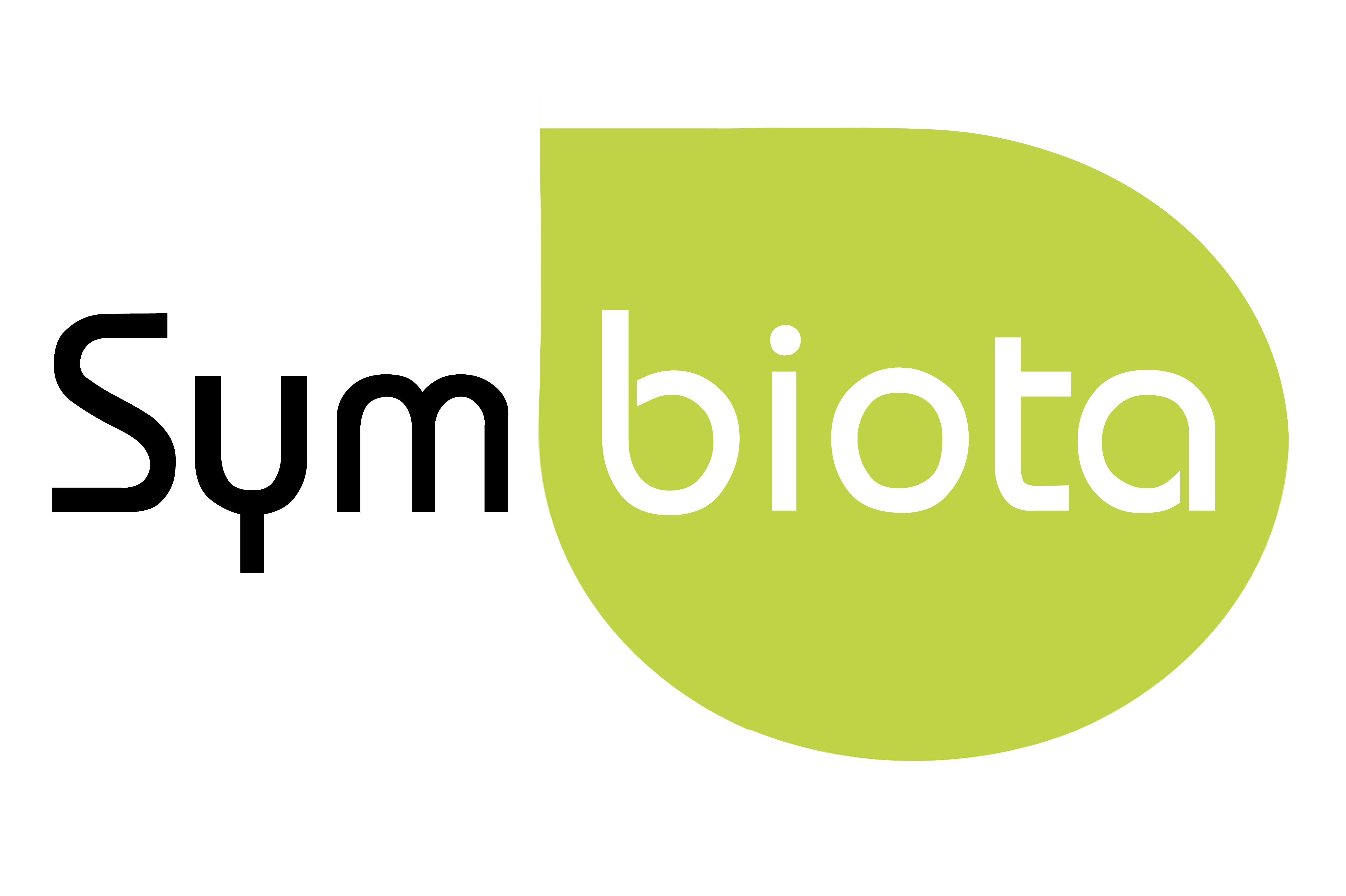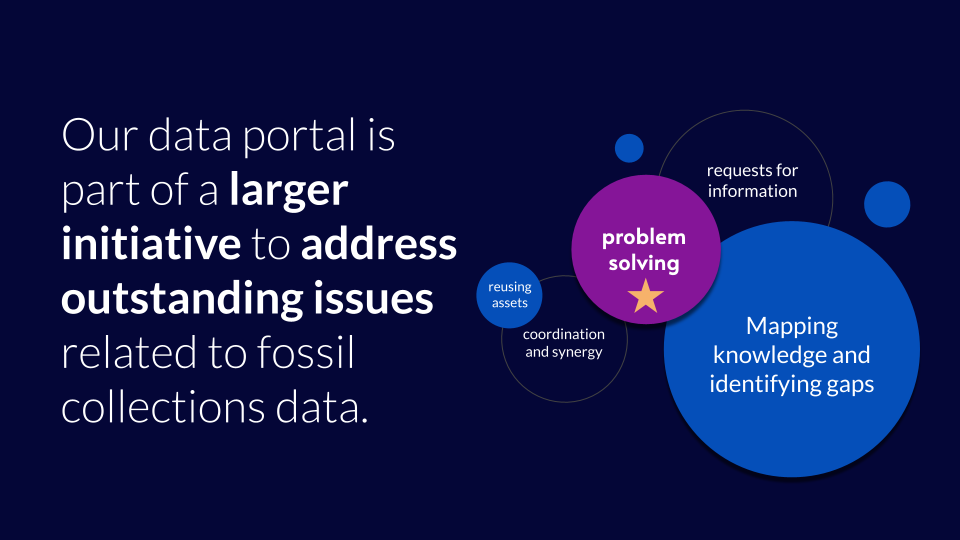Symbiota Paleo Data Portal
This is a landing page that describes what the Symbiota Paleo Data Portal is and why it is important in the context of paleo data. You can dive deeper via the links to related resources aggregated here.
What is Symbiota?
 SymbiotaSymbiota is an adaptable, customizable software that enables self-defined and self-governed communities of practice to create collaborative biodiversity data portals. Data in web-based Symbiota portals can be instantly searchable via public search features, and there are many tools to connect these data to other collections and to aggregators (e.g., iDigBio, GBIF). Symbiota portals include many tools for efficient digitization, data import, and data mobilization, as well as duplicate matching tools (across and within collections), CSV and Darwin Core Archive import and export options, and linking tools to external sources or specimen records. is open source software guided by the Darwin CoreBiodiversity data standard maintained by TDWG, with terms for sharing species occurrence and specimen data. data standard used to create data portals to help collections share and manage biodiversity data. While Symbiota has been widely used to share data from biological collections, support for the active management and publication of fossil specimen data is relatively new (NSF Awards #2324690/2525603). The most commonly used version of Symbiota and a number of Symbiota-based portals are maintained by the Symbiota Support Hub (SSH).
SymbiotaSymbiota is an adaptable, customizable software that enables self-defined and self-governed communities of practice to create collaborative biodiversity data portals. Data in web-based Symbiota portals can be instantly searchable via public search features, and there are many tools to connect these data to other collections and to aggregators (e.g., iDigBio, GBIF). Symbiota portals include many tools for efficient digitization, data import, and data mobilization, as well as duplicate matching tools (across and within collections), CSV and Darwin Core Archive import and export options, and linking tools to external sources or specimen records. is open source software guided by the Darwin CoreBiodiversity data standard maintained by TDWG, with terms for sharing species occurrence and specimen data. data standard used to create data portals to help collections share and manage biodiversity data. While Symbiota has been widely used to share data from biological collections, support for the active management and publication of fossil specimen data is relatively new (NSF Awards #2324690/2525603). The most commonly used version of Symbiota and a number of Symbiota-based portals are maintained by the Symbiota Support Hub (SSH).
Prospective data providers may wish to reference the complete directory of Symbiota portals.
What is the “Paleo Data Portal”?
The Paleo Data Portal (PDP)A Symbiota portal that supports the management and sharing of data associated with paleontological specimens that are made available for research via permanent repositories. The scope of the PDP is limited to extinct organisms and their traces (i.e., fossils). Geological samples, archaeological and anthropological materials, as well as neontological specimen data fall outside this scope and should not be cataloged in this portal. is a Symbiota-based data portal that exists to:
- Provide a low barrier-to-entry data mobilization platform for fossil collections
- Increase access to fossil specimen data for research use
- Build community among fossil collections not previously engaged in digitization efforts
- Integrate with PDWG’s efforts to develop best practices in paleo data management and publishing
- Provide a platform for testing solutions to outstanding issues associated with fossil specimen data (e.g. taxonomy, see Little et al. (2023)Talk presented at the Biodiversity Information Standards (TDWG) annual meeting in 2023. Recording available via the DOI.)
While the PDPPaleo Data Portal. Symbiota-based data portal for fossil collections is hosted by the SSHSymbiota Support Hub. Group based at the University of Kansas that maintains the most commonly used version of Symbiota, as well as a number of Symbiota-based portals., the portal’s Steering Committee provides guidance on best practices related to the management of fossil specimen data.
Critically, the Paleo Data Portal integrates with the goals of a larger project led by the University of Colorado at Boulder, the US National Museum of Natural History, and the University of Kansas’ Symbiota Support Hub that aims to 1) support transformational and translational research in the geo- and biosciences by driving development in the open data landscape and 2) improve the discoverability and use of paleontological specimen data through community engagement and collaboration.

How to participate
If you administer a fossil collection and would like to use the PDP to manage your specimen data, first carefully review the portal’s community guidelines as well as the Symbiota-related content on this website. If Symbiota seems suitable for your data management needs after considering this information, please complete this form if you would like to contribute data to the PDP. Data providers are encouraged to participate in the Paleo Data Working Group.
Related content
- Develop a digitization workflow using Symbiota (How to guide): This guide is intended to help data providers develop digitization workflows for fossil specimens using Symbiota.
- Manage data about fossil specimens using Symbiota (How to guide): This guide is intended to complement introductory documentation for Symbiota data providers, as well as the official Symbiota user documentation, Symbiota Docs. Symbiota Docs provides general guidance for working in Symbiota-based data portals and should be referenced for basic functions and workflows. This manual expands on this resource to provide discipline-specific information for fossil collections.
- Start using Symbiota (Tutorial): This tutorial is designed orient new and prospective data providers to using Symbiota, a tool for managing and publishing fossil specimen data.
Browse additional related content, including PDWG Happy Hours and links out to external resources, via topic: symbiota